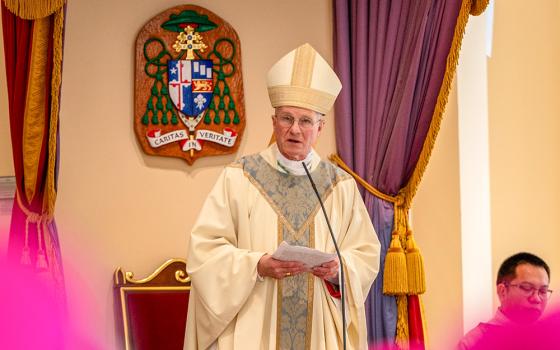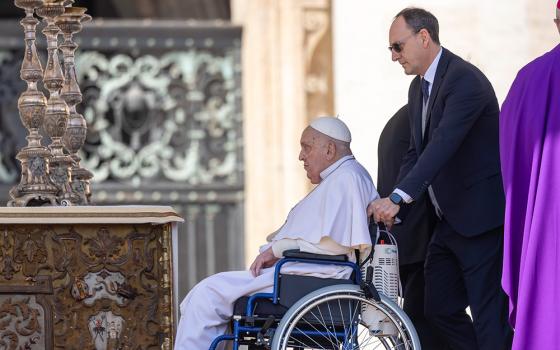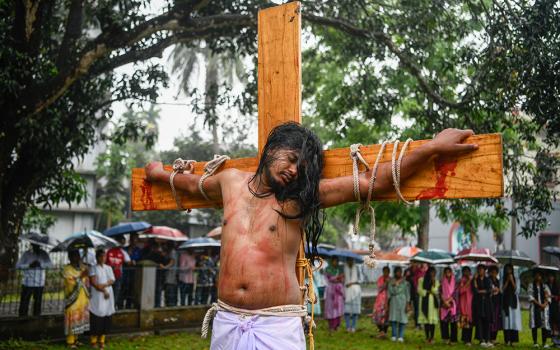Residents dig July 23, 2024, to recover the dead body of a victim of the July 22 landslide that followed heavy rains that buried people in Gofa Zone in Southern Ethiopia state. (OSV News/Gofa Zone Government Communication Affairs Department Handout via Reuters)
Ethiopian Cardinal Berhaneyesus Demerew Souraphiel of Addis Ababa has expressed deep sorrow at the deadly landslide in Gofa Zone, in the southern part of Ethiopia, where the death toll has reportedly reached 257.
Humanitarian agencies, including those that are faith-based, have scrambled to rush emergency relief to Kencho Shacha Gozdi, a remote village in the Gofa Zone, following the first landslide that struck July 22.
Gofa Zone is part of the state known as Southern Ethiopia, about 199 miles from the capital, Addis Ababa. Days of heavy rains in this part of Ethiopia triggered the landslide. Images of people digging through the mud, carrying bodies and women wailing have spread since.
Following the first landslide that engulfed four homes, local people rushed to the scene, digging through mud to rescue their fellow villagers. But another landslide hit July 22, swallowing many of those who were attempting to rescue the victims.
"This tragic event has resulted in a significant loss of life. We offer our heartfelt condolences to the families and friends of those who have lost their loved ones," said Souraphiel in a July 25 statement.
"As urgent rescue and humanitarian assistance are needed, on behalf of the Ethiopian Catholic Church, I express my profound sorrow and assure you of our unwavering support to the affected zone," the statement said.
The United Nations put the death toll at 257 July 25, while warning that the number could rise to 500. This came as hundreds of young men for the third day continued to dig through mud — with their bare hands, spades and pickaxes — in hope of finding more survivors.
The number of missing persons is still unknown, but reports indicate that administrators, teachers, agriculturalists and other professionals were lost in the tragedy.
Souraphiel, who is also the president of Ethiopia's bishops' conference, said the Development Office of the Ethiopian bishops, priests and staff of the Sodo Vicariate, and representatives of the Catholic Relief Services had visited the disaster site and witnessed the extent of the damage. CRS, the humanitarian relief and development agency of the U.S. bishops, has a strong presence in Ethiopia, responding to man-made and natural disasters and also supporting mitigation and recovery activities.
"I call upon all Catholics and people of goodwill to contribute in any way they can to the recovery efforts," the cardinal said.
Advertisement
Archbishop Abune Mathias, patriarch of the Ethiopian Orthodox Tewahedo Church, offered his condolences to the families affected by the landslide.
In a July 24 statement, the patriarch noted that while Ethiopia had faced its share of tragic events, the magnitude of this disaster was particularly difficult to comprehend. He stressed the importance of faith in times of crisis, highlighting the belief in the resurrection of the dead as a source of comfort and solace.
Mathias called for prayers and support for the victims and their families, and urged the community to come together in solidarity and compassion.
Since the disaster, humanitarian agencies have been dispatching food, nutrition, health and other critical supplies to help people affected by the landslides.
An estimated 15,000 people at risk of further landslides need to be evacuated from the region, according to the U.N. Office for the Coordination of Humanitarian Affairs. Among these are at least 1,300 children under 5 and over 5,000 pregnant and lactating women.
In Ethiopia, Africa’s second most populous nation, more than 21 million people, or about 18% of the population, live on humanitarian assistance. This is due to climate change-driven disasters, including floods and drought, and conflicts.
A war fought between the national army and the rulers of the northern region of Tigray left at least 1,5 million people displaced.





